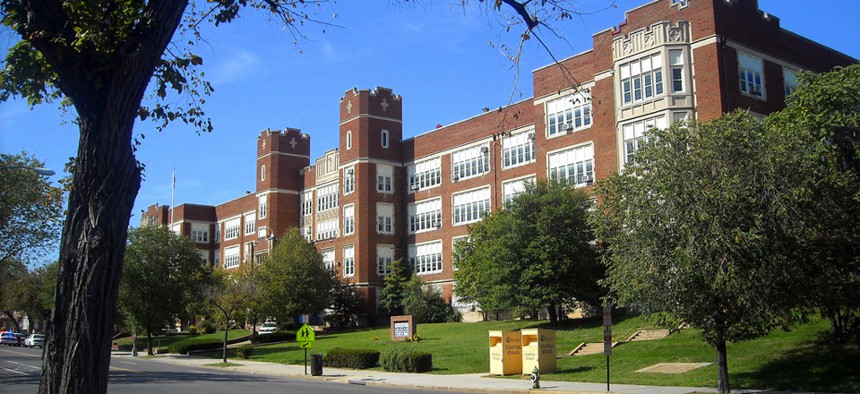Over Half of D.C. Schools Are Exposed to Gunfire

DC's Eastern High School is located in the Capitol Hill neighborhood. Flickr user ncindc
"If a teacher hears a 16-round burst, what do they say to their kids?" That's just one of the questions that Urban Institute researcher Sam Bieler has after finding that more than half of Washington, D.C., public and charter schools were exposed to close-range gunfire during the 2011-12 school year.
Of the 116 schools that fell within range of a gunfire-detection system called ShotSpotter, which records audio of shots, 54 percent were exposed to gunfire within 1,000 feet between 7 a.m. and 7 p.m. during school days. Even at that distance, a burst of bullets is hard to miss, says Bieler, who coauthored a new report. The range of the ShotSpotter system does not cover the other 59 schools in the District of Columbia.
Of those schools that were exposed to gunfire within 1,000 feet, 42 percent experienced gunfire that occurred during hours when students were going to and leaving school—between 8 and 9 a.m. and 3 and 4 p.m. The report notes that this level of gunfire at those hours was "particularly concerning," saying that children are most likely to be outside of the school building during that time and more exposed to potential gunfire.
Last year, The Washington Post ran an in-depth overview of the ShotSpotter system, but did not focus on schools specifically. The new report from the Urban Institute shows just how exposed schools in the District are to this level of violence.
"It does go beyond the traditional neighborhood story, which reveals another aspect of why this new data can be so potent," Bieler says. "You can find these schools in the southwest [quadrant of the city], in the northwest. You can find them in the northeast."
A map of gunshot incidents shows dozens of schools pinpointed across the District, from Columbia Heights to the H Street corridor and across the Anacostia River. The study did find, however, that just 9 percent of schools accounted for nearly half (48 percent) of gunfire incidents within 1,000 feet. Further, four schools—including two middle schools and an elementary school, all located in northwest D.C.—were exposed to between nine and 11 incidents within 500 feet.
The ShotSpotter technology is a new and innovative way of pinpointing the time and location of gunfire throughout the District. Teaming up with the research community, D.C. police, Bieler argues, could find new ways of tackling gun violence around schools.
"D.C. has made huge strides in public safety. I don't think anyone would deny that," Bieler says. "But there's a huge opportunities to develop new tools, new strategies, and new consensus on how we can tackle this problem."
While the study does not compare D.C. with other urban areas throughout the country, it does show that an alarming number of young people in the District are exposed to gunfire. The impact of that trauma on their academic achievements and mental states is another problem down the line.
(Image via Flickr user ncindc)






